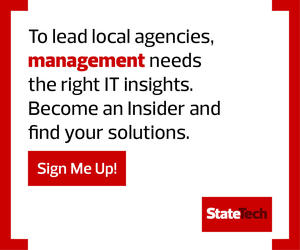How to Stretch Your IT Budget Effectively
There is no single correct answer for IT leaders as they contemplate how to make investments and where to cut their budgets. Each agency and locality will need to determine what is best based on their mission and priorities. However, the lights still need to be kept on and essential services still need to be delivered.
After that, IT leaders may start asking whether and where they can augment their staff with outside resources. They may also be wondering about modernization tasks they want to achieve, such as moving to a hyperconverged infrastructure environment from traditional three-tiered architecture, but do not have the capacity to do so internally.
One of the most difficult tasks for IT leaders is determining what is actually being used in their environments. They can conduct audits internally or with a trusted third-party solutions provider to determine what is on their networks and what is in use.
Using IT asset management tools, IT leaders can determine if certain resources can be decommissioned or taken out of their environments so they do not need to pay annual maintenance or accrual fees. Conducting such audits can help determine where costs can be cut most effectively without hampering the agency’s mission.
Another tool IT decision-makers can use to better manage their budgets is enterprise licensing agreements for software. Often, agencies can work with their major software provider to enter into Multi-year can bring additional cost savings, as well as financing options. Annual maintenance is a much more rigid and defined process which typically does not allow for flexibility and creative economics.
This can give agencies some additional flexibility in terms of financing once they make a multiyear commitment. Agencies might be able to pay less in the first year of an agreement and more later on, giving them time to wait for economic activity to kick back into gear.
Agencies have been shifting applications to the cloud for years, but the pandemic has accelerated the upgrading of legacy IT systems. While this work is necessary in many cases, it is also complex. Agencies can (and will likely need to) turn to managed services to help get such work done.
This will be especially true if agencies need to cut IT staff or face large budget shortfalls, as the work can be expensive to do in-house. It can also be time-consuming at a moment when governments need to accelerate citizen service delivery due to increased demand. Managed services are obviously not free, but they can provide agencies with savings in the long term and offer greater flexibility.
LEARN MORE: How have counties modernized the tech they use to provide public benefits?
Look for Opportunities to Invest in New Technologies
While cost containment measures will need to be put in place, IT leaders should not look at this moment as a time to pull away from technology investments that can deliver real returns. Technology can and should be viewed as a force multiplier.
Take chatbots or automation tools in call centers. These tools can replace human responses to frequently asked questions and allow human workers to focus on higher-level work. Letting those kinds of widgets do that work saves time and money.
“The use of chatbots exploded in state government this year to respond to the pandemic, and those chatbots (in at least 75 percent of states) are here to stay,” Amy Hille Glasscock, a senior policy analyst at the National Association of State Chief Information Officers, tells StateTech. “IT offices will be expanding their chatbots to additional state websites, making them more sophisticated and including them in their service offerings to agencies. States will also be looking at using emerging technologies for fraud detection, cybersecurity and citizen-facing digital services.”
States and localities still need to provide services to their constituents; they just need to do so in a more effective and increasingly digital manner. Technology can help ease that transition. Now may be the time to virtualize infrastructure or migrate legacy applications to the cloud to gain scalability.
The next few months will undoubtedly be tough for state and local governments. However, they have tools to weather the storm, options to invest in the future and will make it through the difficult times ahead.
This article is part of StateTech’s CITizen blog series. Please join the discussion on Twitter by using the #StateLocalIT hashtag.












